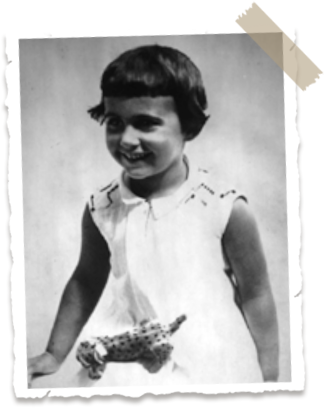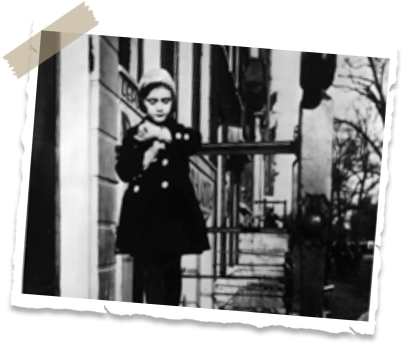About the Production
(ORIGINAL SONY PICTURES CLASSICS NOTES)

As a child growing up in South Africa in the late 1950's, London-based filmmaker Jon Blair vividly recalls the day he saw George Steven's film, "The Diary of Anne Frank." Nearly thirty five years later, in 1994, with the release of Steven Spielberg’s “Schindler’s List” and the subsequent renewed interest in Blair’s British Academy Award-winning documentary “Schindler” was asked if he could produce a film to commemorate the fiftieth anniversary of Anne Frank's death.
"After 'Schindler,' which I made more than ten years previously, I had no interest in touching World War II material again, let alone the Holocaust," said Blair. "But when I discovered that, somehow, no one had ever attempted to make a documentary on the complete story of Anne Frank, it was too tempting to resist."
Blair obtained extraordinary entree to the critical elements of the story. He was able to forge exclusive relationships with all key parties -- the Anne Frank House and Museum in Amsterdam, the Anne Frank Foundation in Switzerland and eyewitnesses from around the world. He was granted access to film and permission to recreate the furnishings of the Franks' secret hiding place in Amsterdam using a 35mm mobile motion control camera -- special effects equipment usually only employed on the most expensive commercials and movies -- to capture a sense of the physical surroundings, both as empty rooms and as fully "dressed" sets. Blair also obtained the rights to use extracts from the diary as part of the film's voice-over.
As the production team moved from location to location throughout the Netherlands, Germany and Poland film researcher Adrian Wood combed archive libraries in Moscow, Washington, New York, Holland, Germany and England discovering unique footage. He and Blair, for example, were able to obtain footage from a rarely seen film of the Westerbork transit camp, where the Frank family was held after its capture.
Perhaps the most dramatic discovery was a brief film clip of Anne Frank herself at the window of her family's home. The footage, however, was extremely dirty and scratched, so Blair enlisted the help of a number of film restorers (who had previously restored Walt Disney's “Fantasia”). Using the latest computerized techniques, they cleaned and treated each frame of the footage and brought it back to compelling life.

Anne Frank Remembered is by no means merely a collection of archival clips. Blair has produced a wide range of visual material to drive the narrative, all shot on widescreen super 16mm or 35mm film. In addition to the painstaking filming inside the secret annex, Blair utilized a wartime German steam locomotive to recreate the experience of being on a transport bound for Auschwitz.
At the core of Anne Frank Remembered, however, are first-person eyewitness accounts of Anne's life. Inorder to tell her story fully, Blair elicited the cooperation of those who had known the Franks throughout their lifetimes: Anne's earliest childhood friends, neighbors, employees of Otto Frank, camp survivors, and Anne's last living relative, her cousin Bernd Elias. Blair brought them from as far away as Israel and the U.S. -- to the Amsterdam streets that had been home to the Franks as well as the hiding place itself -- to deliver their testimony on camera. In addition, several survivors o Westerbork, Auschwitz and Bergen-Belsen offer their memories from the sites of the original camps, to which they return for the first time in 50 years.
"[Cinematographer] Barry Ackroyd and myself have tried to ensure the film has a rich visual texture which complements the interviews," observes Blair. "Barry's evocative photography of Amsterdam, Auschwitz and the other locations has meant that we can utilize the archive very selectively, rather than depend on it to tell the story."
Indeed, as remarkable as much of the archival discoveries are, Anne Frank Remembered is as much a contemporary memory piece, which allows eyewitnesses to history to pass on to future generations a compelling story which must never be forgotten.
